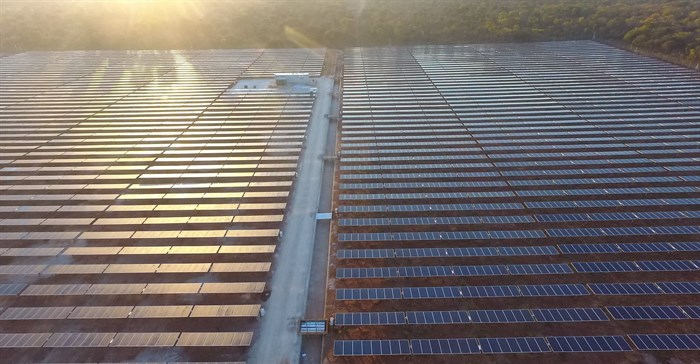A first for sub-Saharan Africa: Zambia's sun-tracking solar panels

The technology, from Convert Italia, was necessary as the designated land from the solar farm was not large enough to accommodate the planned infrastructure.
How it works
The tracking of the sun is achieved via Global Positioning Satellite (GPS) connected to an Electronic Tracker Control Board (ETCB).
The integrated GPS device acquires both date and time. This information, along with astronomical clock algorithms, is sufficient to identify and properly track the sun's position.
Each single axis tracker automatically tracks the sun's East - West movement during the day via the ETCB.
A single control board controls a maximum of 10 structures with a photovoltaic energy capacity of about 97,5kWp.
The primary benefit of the tracking system is that it improves plant efficiency by increasing energy output as it lengthens the plants peak generation period above similar sized fixed axis plants.
A lack of renewables long term
Commissioned in 2019, the Ngonye plant is a joint venture between EGP and the Industrial Development Corporation (IDC).
The operation has the capacity to supply 34 MW of energy to ZESCO, the national electricity utility, under an existing 25-year Power Purchase Agreement (PPA).
EGP Zambia’s Kachinga-Wankunda Phiri says the plant is one of only two large scale, grid-connected renewable energy facilities operating in the country.
“To date, there has only been one procurement round in Zambia leading to projects achieving commercial operations – The Scaling Solar Program – which was managed by the IDC in partnership with the International Finance Corporation (IFC),” he says.
Due to Zambia’s lack of a long-term procurement programme for renewables, EGP Zambia is focused on growing its commercial and industrial pipeline.
“Our goal is to provide tailormade solutions to commercial and industrial customers that will allow them to reduce their carbon footprints, achieve their sustainability goals and facilitate business continuity by ensuring a stable energy supply,” concludes Phiri.
Related
Eskom’s limited emissions exemptions: A complex balancing act, practical steps going forward 11 Apr 2025 Collaboration led to SA Renewable Energy Master Plan adaption 8 Apr 2025 SA power system constrained in March, EAF largely unchanged 7 Apr 2025 History made as Cape Town reveals R39.7bn infrastructure investment plan 31 Mar 2025 A promising step forward as Eskom moves from crisis to innovation 25 Mar 2025 #Budget2025: Implications for renewable energy solutions private producers 17 Mar 2025























